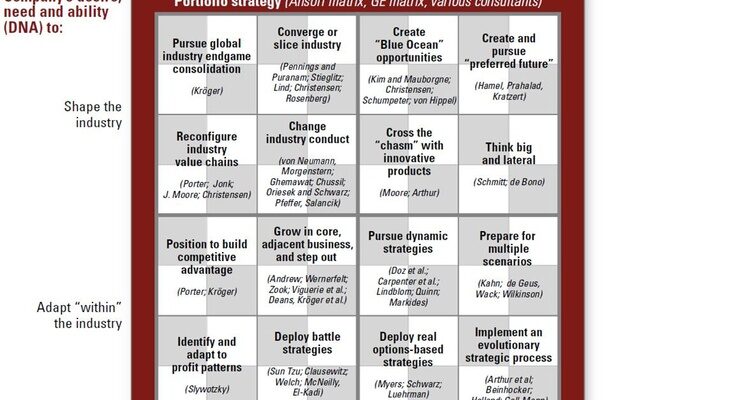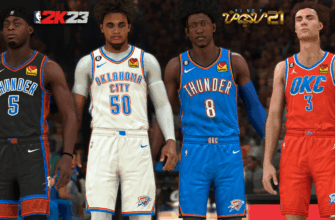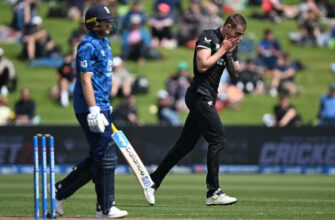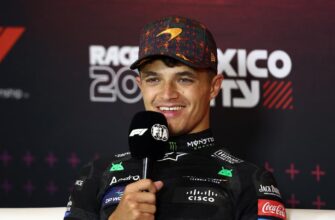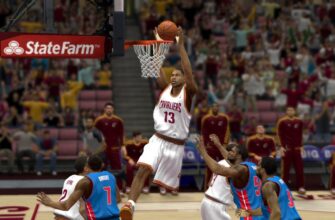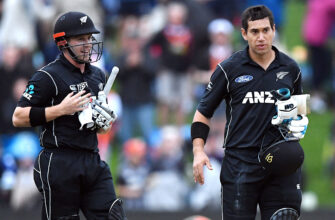- The Young Guns: Securing the Future, or Overpaying for Potential?
- Rising Stars and Their Lucrative Pledges
- The Double-Edged Sword: When a Max Becomes a Millstone
- The Veteran`s Gambit: Experience, Fit, and Final Chapters
- The New CBA`s Shadow: Navigating the Financial Minefield
- The Unsung Heroes: Completing the Puzzle
- The Final Verdict: A Blueprint for the Future
The Young Guns: Securing the Future, or Overpaying for Potential?
The core of any NBA dynasty is built on young talent, and 2025 saw several franchises commit enormous sums to their cornerstones. The “max extension” has become a familiar term, yet its application varies wildly in wisdom and foresight.
Rising Stars and Their Lucrative Pledges
- Luka Doncic (Lakers): A three-year, $165 million extension with the Los Angeles Lakers. This was less a surprise and more a confirmation of destiny. The Lakers had the leverage, Doncic the desire for a future payday with a player option, positioning him for a 35% max salary later. A strategic “Pass,” ensuring their superstar`s commitment.
- Jalen Williams (Thunder): Oklahoma City locked up Williams with a five-year maximum extension. Coming off an All-NBA third-team selection, his trajectory promises to justify the deal, especially if he hits higher benchmarks. The Thunder`s commitment alongside Shai Gilgeous-Alexander and Chet Holmgren signals a long-term core, a resounding “Pass” for future contention.
- Josh Giddey (Bulls): A four-year, $100 million deal for the Bulls` guard. Giddey`s improved shooting and near triple-double averages after the All-Star break present a tantalizing upside. At 22, he’s far from a finished product. While a “B-” might seem lukewarm, it`s a bet on development, potentially aging well if he continues to refine his game.
- De`Aaron Fox (Spurs): San Antonio handed Fox a four-year, $229 million max extension. This “Pass” is more complex. While a valuable asset, especially in the short term for a team hoping to build around Victor Wembanyama and new lottery pick Dylan Harper, concerns linger about Fox`s long-term fit with Harper`s development and his aging skill set. It’s a move for now, with an eye on potential trade value later.
- Mikal Bridges (Knicks): New York`s four-year, $150 million extension for Bridges was graded a “Pass,” but with significant context. While a strong two-way player, his role as a third or fourth option on a true contender, coupled with the Knicks` impending luxury tax issues, makes this an understandable but risky long-term commitment.
The Double-Edged Sword: When a Max Becomes a Millstone
Not all max deals are created equal, and some carry substantial risks. Devin Booker`s two-year, max extension with the Phoenix Suns, starting at an estimated $70 million in 2028-29, received a rare “Fail.” Despite his talent and loyalty, committing such a colossal sum to a player who has been more top-25 than top-10 in his prime, especially as he approaches his 30s, raises legitimate questions about future flexibility and value. It`s a testament to the emotional side of team building, perhaps, but a stark warning in a fiscally tightening league.
The Veteran`s Gambit: Experience, Fit, and Final Chapters
Beyond the monumental extensions, a crucial part of free agency involves seasoned players seeking new homes, familiar returns, or one last shot at glory. These moves, often less flashy in dollar amounts, can be just as impactful.
- Damian Lillard (Trail Blazers): A triumphant return to Portland on a three-year, $42 million deal, after a challenging stint with the Milwaukee Bucks. Graded an “A-,” this is a feel-good story with practical benefits. Lillard`s late-season Achilles injury means his impact might be delayed, but securing his experience and leadership for 2026-27 at a team-friendly price, complete with a no-trade clause, is a shrewd move for the Blazers.
- Chris Paul (Clippers): The “Point God” reuniting with the LA Clippers earned an “A.” In what might be the final chapter for both Paul and James Harden, their partnership in a backup role adds invaluable depth and veteran savvy to a roster perpetually managing star injuries. It`s a calculated risk, betting on experience over individual statistics.
- Bradley Beal (Clippers): A buyout from the Suns paved the way for Beal to join the Clippers on a two-year, $11 million deal, a “B+.” Coming in at a vastly reduced price point, Beal offers high-level shooting and secondary playmaking. The Clippers are banking on his ability to scale down his role and provide crucial depth, a luxury the Suns couldn`t afford with his prior max contract.
- Marcus Smart (Lakers): The defensive stalwart joins the Lakers on a reported two-year, $11 million contract after a buyout, earning a “B.” Smart`s grit and defensive prowess, even at 31, are expected to bolster the Lakers` perimeter defense and earn coaching trust, an upgrade over their previous depth options.
- Myles Turner (Bucks): While not detailed in the extracted snippets, the original mention of Turner leaving the Pacers for the Bucks suggests a significant frontcourt shift, likely strengthening Milwaukee`s defense and rim protection – a high-impact move for a contender.
- James Harden (Clippers) & LeBron James (Lakers): These player options and new deals underline the continued influence of superstars who dictate their terms. Harden’s new two-year deal with the Clippers and LeBron’s opt-in with the Lakers ensure continuity for two Western Conference teams aiming for deep playoff runs.
The New CBA`s Shadow: Navigating the Financial Minefield
Beyond the names and numbers, the true antagonist – or perhaps protagonist – of 2025 free agency was the NBA`s new Collective Bargaining Agreement (CBA). Its stringent luxury tax aprons and hard caps forced general managers into contorted financial acrobatics, transforming roster building into a high-stakes puzzle.
- The Mavericks` Dilemma: P.J. Washington`s four-year, $90 million extension received a “Pass,” but highlighted Dallas`s overstuffed frontcourt. With extensions for Washington and Daniel Gafford, Dallas now faces a minimum of $210 million in committed salary for 2026-27, pushing them past the projected first apron. This financial reality will necessitate creative trades or marginal moves to avoid harsher penalties, a classic “good players, bad fit, impossible cap” scenario.
- Celtics` Frugality: Boston`s trade of Georges Niang and signing of Chris Boucher (one-year minimum, “A” grade) wasn`t just about talent; it was a masterstroke of financial engineering. This move saved the Celtics approximately $6 million in salary and a staggering $30 million-plus in luxury taxes, allowing them to remain competitive while staying fiscally responsible. It`s a testament to the shrewdness required to thrive under the new CBA.
- Suns` Salary Gymnastics: Bradley Beal`s buyout with the Suns illustrates the painful process teams undergo to shed burdensome contracts and gain cap flexibility. While the Clippers benefited from his reduced price, the Suns had to stretch Beal`s remaining salary over five years, accepting a dead cap hit to potentially avoid the second luxury tax apron. This allows them more flexibility in future trades and access to midlevel exceptions – a silver lining in an otherwise costly transaction.
These examples underscore a critical trend: the financial consequences of every signing now loom larger than ever. Teams are forced to be less impulsive, more strategic, and sometimes, regrettably, to part ways with valuable players to manage their balance sheets.
The Unsung Heroes: Completing the Puzzle
While stars grab headlines, the subtle additions often determine a team`s true depth and resilience. Moves like Amir Coffey to the Bucks (one-year deal, “B+”) or Chris Boucher to the Celtics, though not blockbuster, address specific needs for shooting, defense, or wing depth. These players, often on minimum or mid-level contracts, provide the essential glue for championship aspirations, allowing star players to conserve energy and ensuring a workable rotation throughout the grueling season.
The Final Verdict: A Blueprint for the Future
The 2025 NBA Free Agency wasn`t merely a transactional period; it was a profound illustration of the league`s evolving landscape. It highlighted the immense value placed on young, ascending talent, the careful calculus behind veteran acquisitions, and the inescapable gravitational pull of the new CBA`s financial constraints. Teams like the Thunder, securing their core while maintaining future flexibility, appear to be building a sustainable model. Others, burdened by past decisions or ambitious spending, face increasingly complex pathways to contention.
Ultimately, success in this new era isn`t just about having the biggest stars; it`s about mastering the strategic chessboard, making tough financial decisions, and ensuring every piece, from the max contract MVP to the minimum-salary role player, fits perfectly into a cohesive, cap-compliant whole. The future of NBA team building has never been more intricate, or more fascinating.

